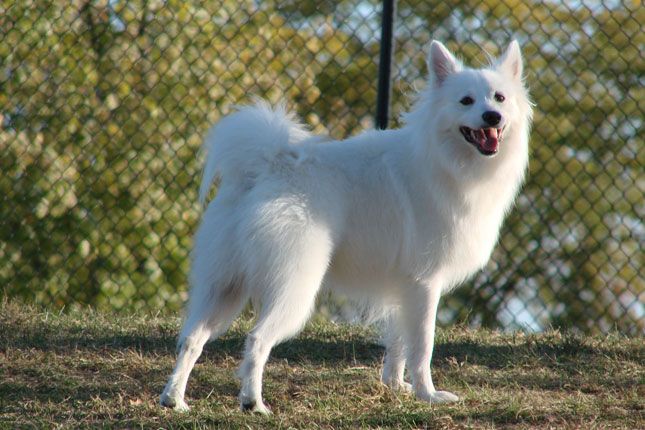The American Eskimo Dog was originally bred to guard people and property and, therefore, is territorial by nature and a valiant watchdog. It is not considered an aggressive breed but, due to its watchdog history, American Eskimo dogs are generally quite vocal, barking at any stranger who comes in proximity to their owners’ territory.
Table of Contents
American Eskimo Dogs as Watch Dogs?
The American Eskimo Dog, (a. k. a. American Spitz or “Eskie”), was initially a guard dog and herder in her home country of Germany.
Are American Eskimo Dogs Aggressive?
What’s the American Eskimo dog like?The American Eskimo is energetic, inquisitive and serious about his people-loving. He’s devoted to his family and needs their attention. Activities he would enjoy range from jogging to curling up on the family couch. He’s great with children, but his tolerance may reach its limit around aggressive toddlers. Like any other dog, the Eskie needs firm and consistent training as soon as you bring him home. Always use positive reinforcement when he’s done something correctly, treats are always a great reward! Grooming an Eskie isn’t as extensive as you may think by looking at him. To keep his coat looking beautiful brushing and/or combing will be required about twice a week to remove dead hair or any mats. His white coat should be washed as needed.
American Eskimo Dogs Background
BackgroundThe American Eskimo dog already has you fooled; the name has no roots in Eskimo culture. Actually, he’s a descendent of the European Spitz dogs: white German Spitz, the white Keeshond, the white Pomeranian and the white Italian Spitz. In America, throughout the 19th century, Eskies were performers, often travelling around in circus routines. Now, American Eskimo dogs come in three sizes; toy, miniature, and standard. The American Eskimo Dog was recognized by the American Kennel Club in 1994.
Family and Bonding
Obesity can be a significant health problem in American Eskimo Dogs. It is a serious disease that may cause or worsen joint problems, metabolic and digestive disorders, back pain and heart disease. Though it’s tempting to give your pal food when she looks at you with those soulful eyes, you can “love her to death” with leftover people food and doggie treats. Instead, give her a hug, brush her fur or teeth, play a game with her, or perhaps take her for a walk.
Friendly
The American Eskimo Dog is intelligent, alert, and friendly, although slightly conservative. It is never overly shy nor aggressive, and such dogs are to be severely penalized in the show ring. It is an excellent watchdog at home, sounding a warning bark to announce the arrival of any stranger. It is protective of its home and family, although It does not threaten to bite or attack people. The American Eskimo Dog learns new tasks quickly and is eager to please.
American Eskimo Dog Nature
The average cost of an American Eskimo puppy is between $600-$1000, but for the top breed lines you can expect to pay in the region of $4000, so they are an investment in both money and time. But with their upbeat, lively nature, moderate exercise needs and super-trainable brain, the American Eskimo dog can make a fantastic family pet.
Intelligence
Moderately Easy Training: American Eskimo Dogs learn quickly and are eager to please. Harsh training techniques are not appropriate. American Eskimo Dogs should be trained early in life. Obedience training is recommended.
Love
American Eskimo Dogs as a Pack Animal
See the fact file below for more information on the American Eskimo Dog or alternatively, you can download our 20-page American Eskimo Dog worksheet pack to utilise within the classroom or home environment.
Physical Traits
Communication of a dog is based on two types. The former being barking while the other being that of the body language or body signs. The American Eskimo dog or puppy is an extremely loud dog that has less control over its barking which is a common feature of a Spitz. However, it is due to the fact that they are actually watchdogs. If an American Eskimo dog is left on its own for a while it suffers from operational anxiety and will resort to barking continuously until it is petted down or showered with adequate affection. The barking of a dog also depicts its behavioral traits. Loud barking indicates a dog being strong and brave while a low murmuring indicates a scared dog. As for the body language, a dog wagging its tail clearly means that the dog is happy while a dog who is standing up with its ears pointed out means that the dog is trying to listen to something. The Eskie breeds are wary of strangers and can get alert if someone unknown shows up.

